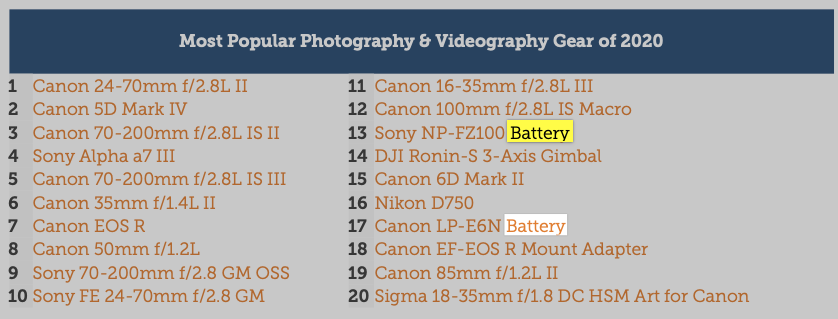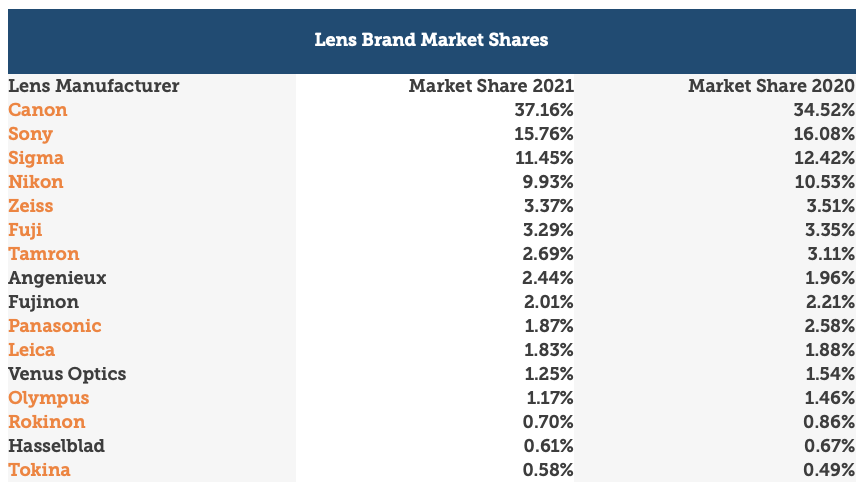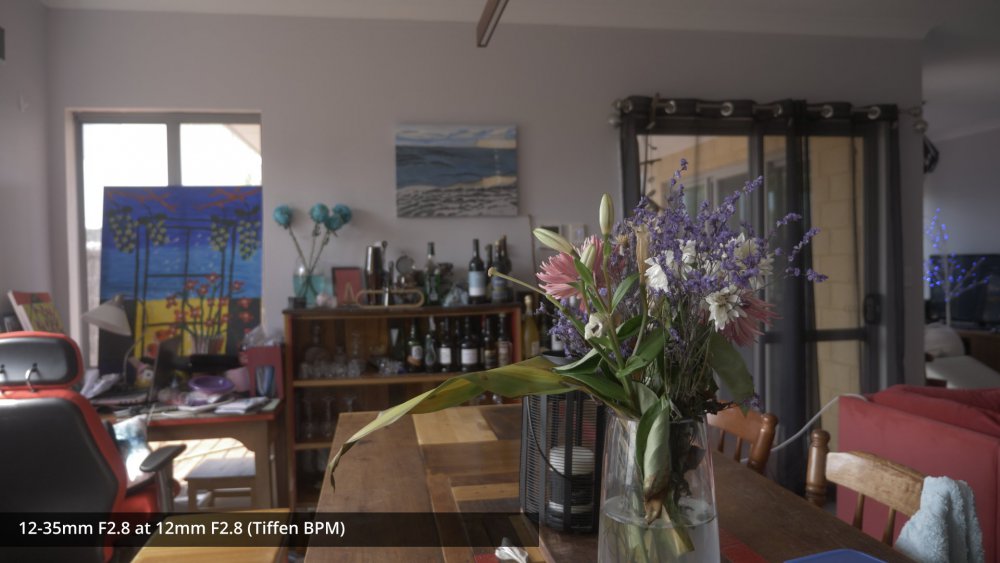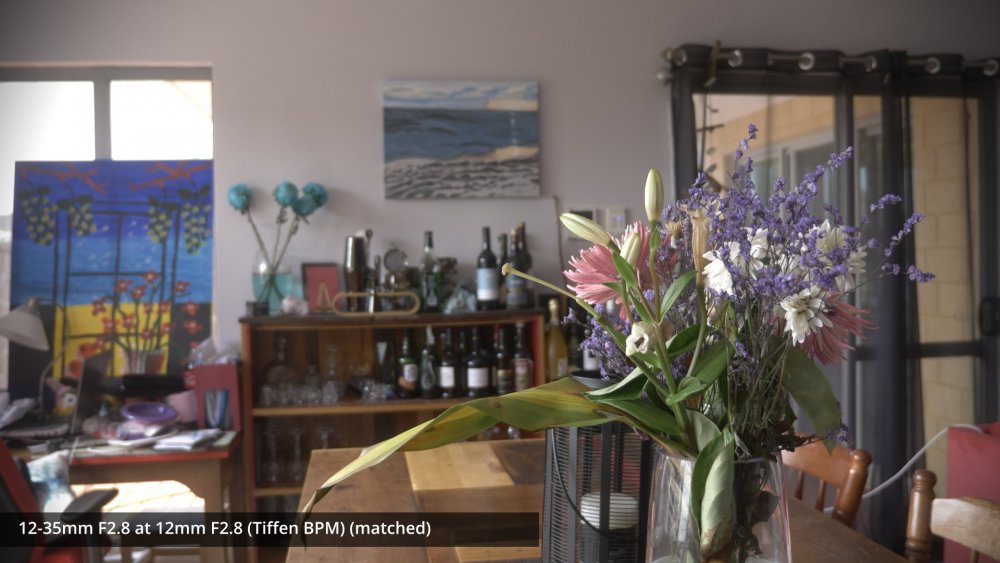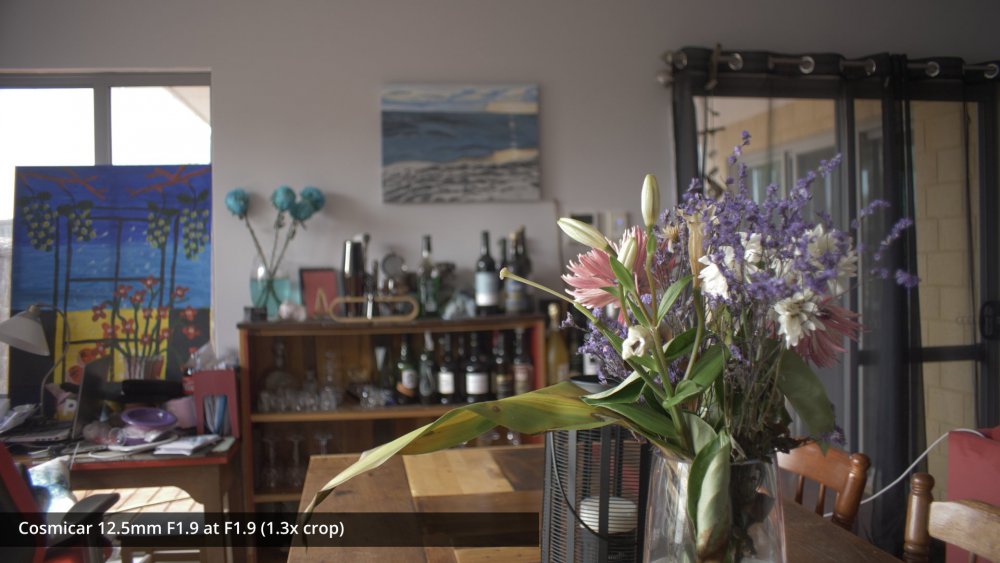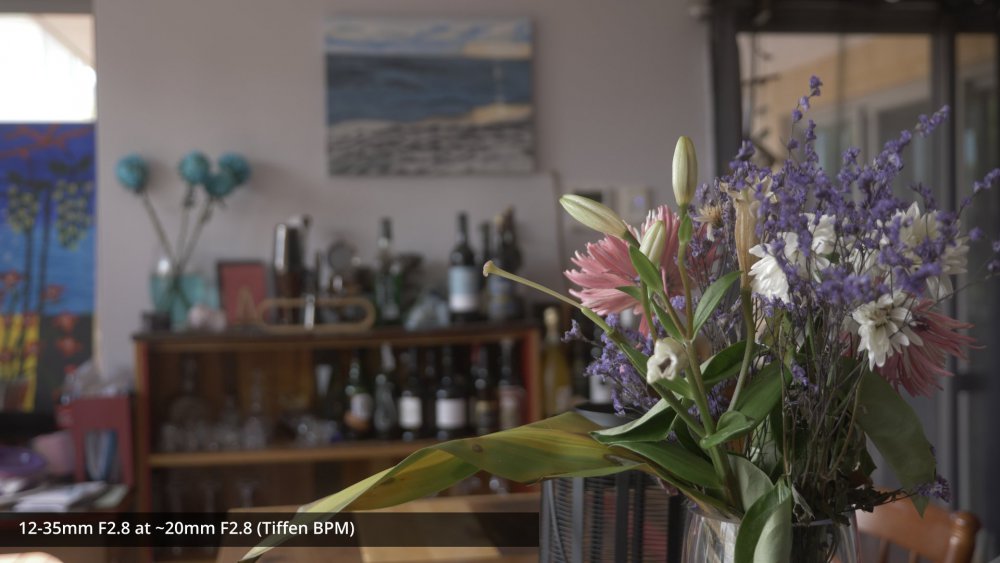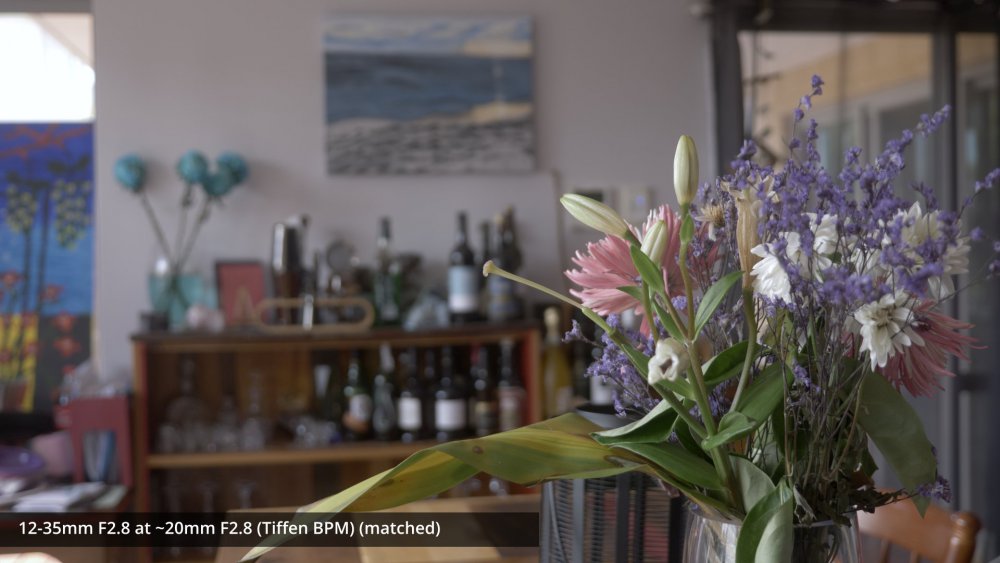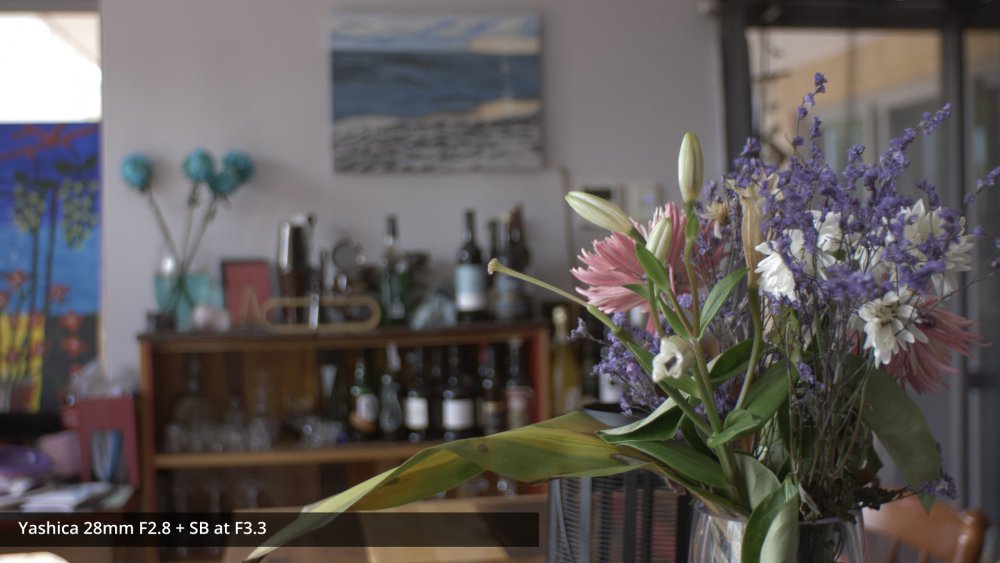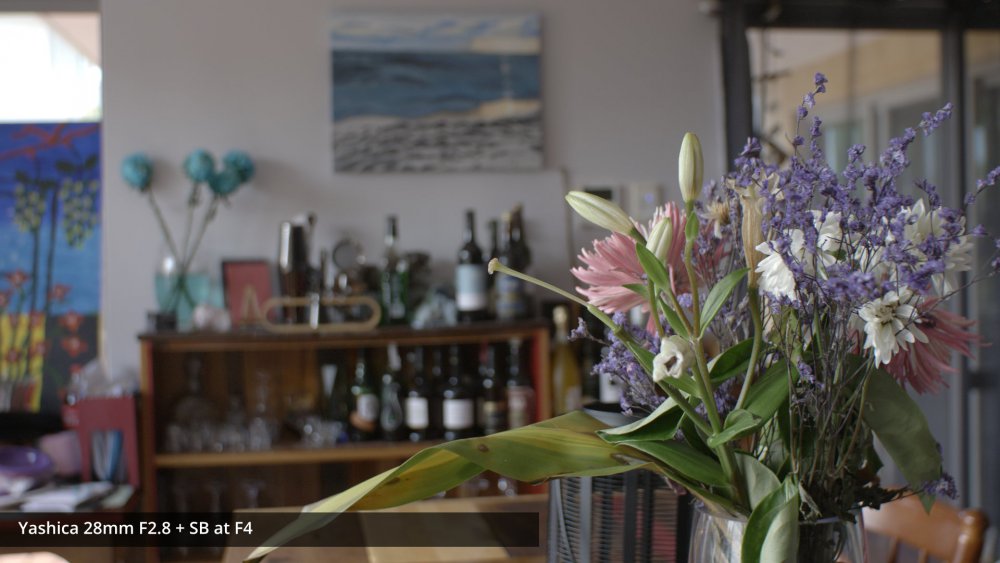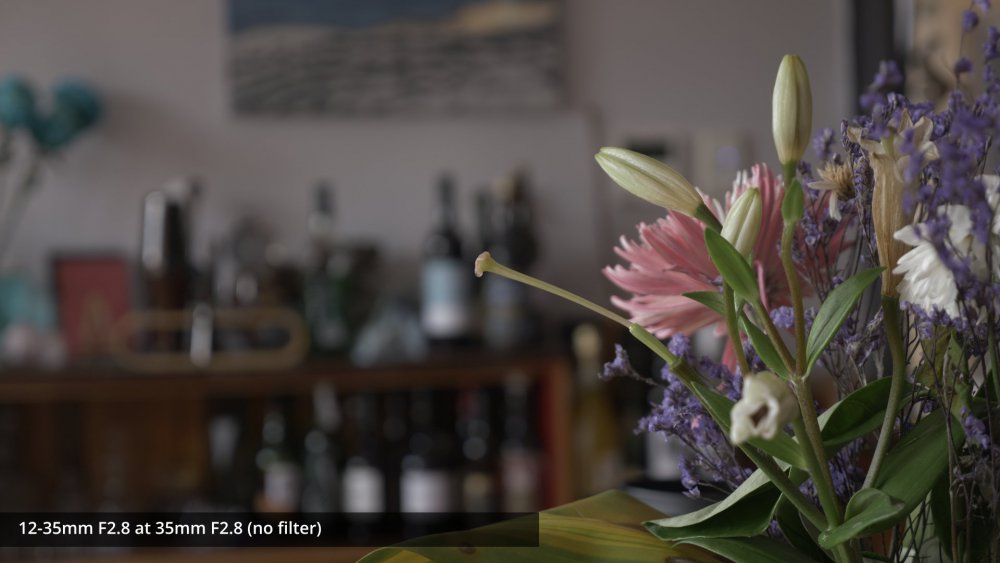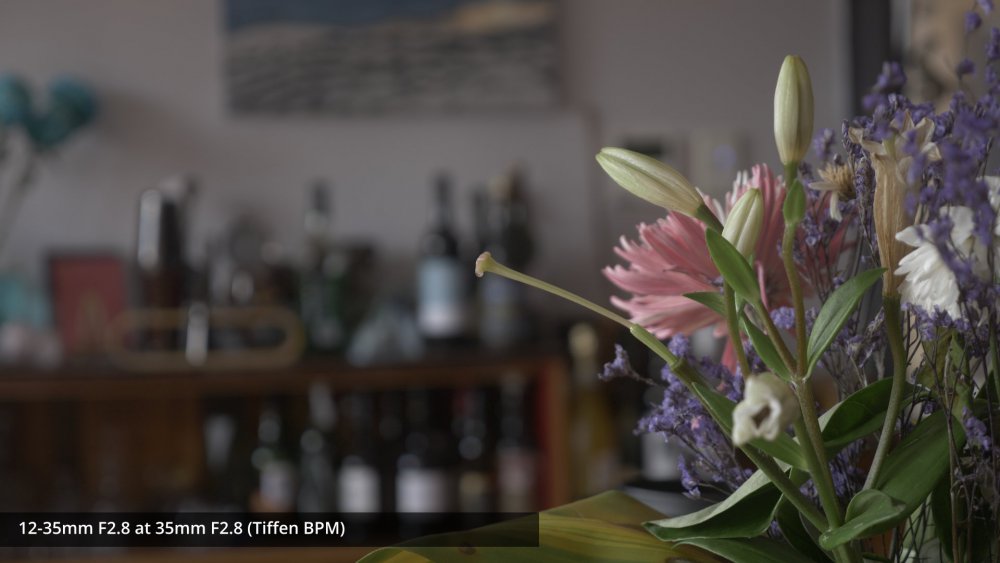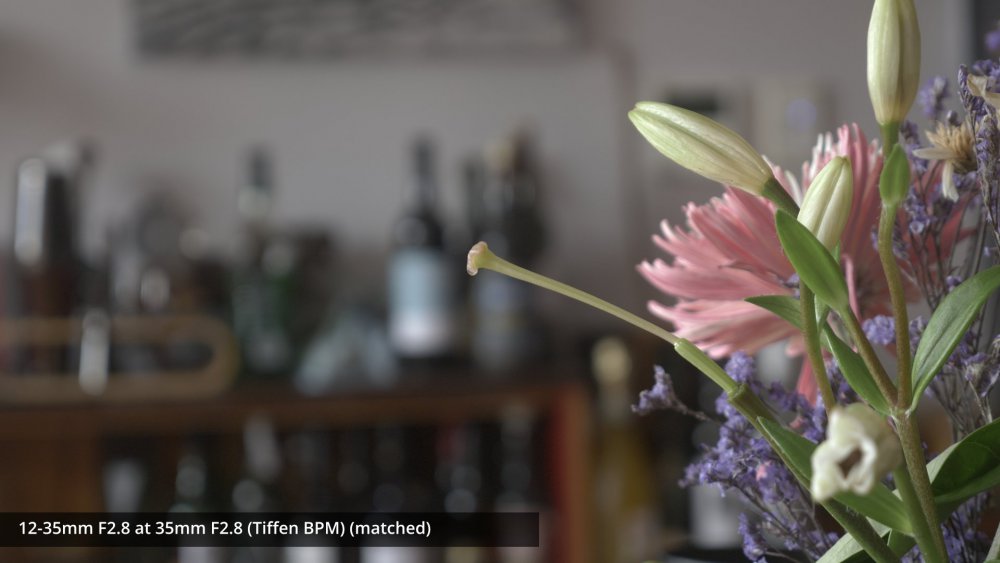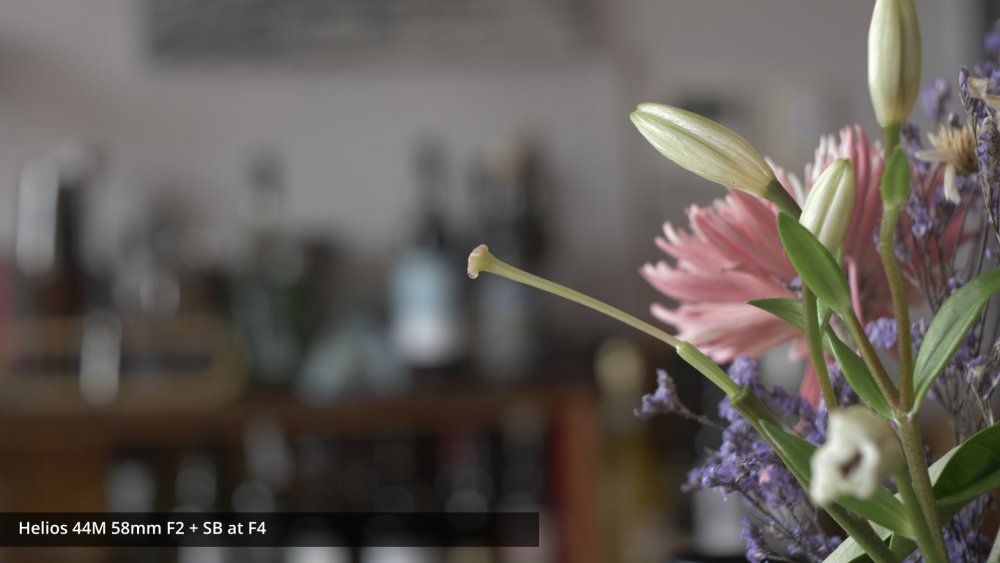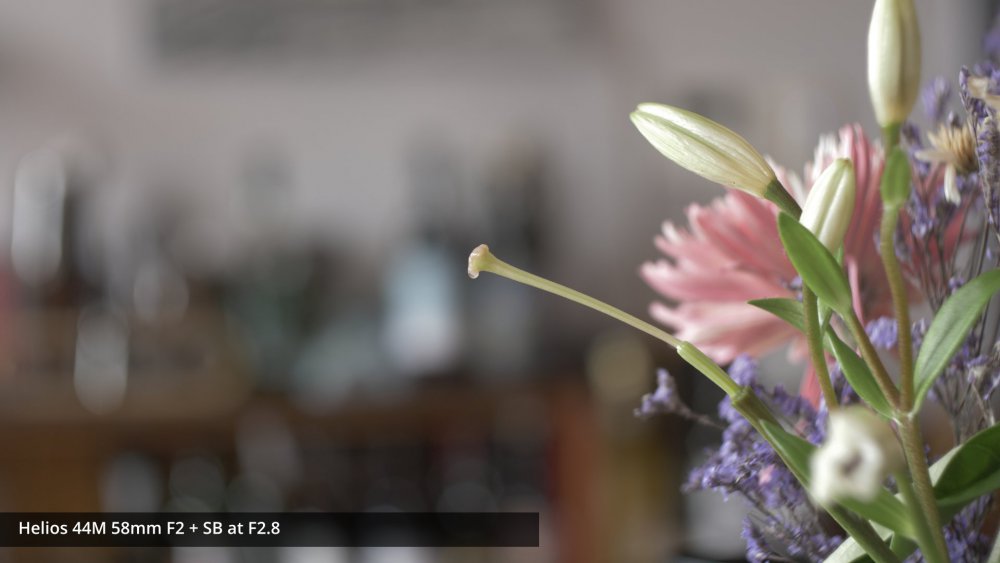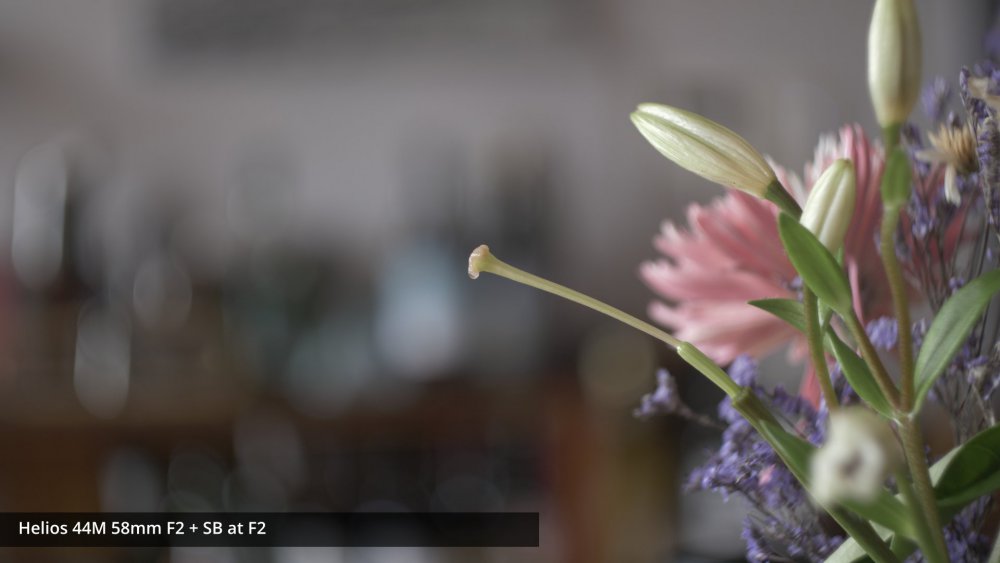-
Posts
8,032 -
Joined
-
Last visited
Content Type
Profiles
Forums
Articles
Everything posted by kye
-
Was 'muted' the style at the time? The price of it alone is enough to ensure that a different type of film-maker would be buying it, and they'd potentially be grading it differently? $12K for a camera seems crazy, especially now with what you can get for $5-6K.
- 19 replies
-
- 1DX to 1DC firmware
- 1DX RAW
- (and 3 more)
-

Sony Xperia PRO-I comes with 1-inch 24mm f/2.0 main camera
kye replied to androidlad's topic in Cameras
I agree - there's definitely a gap in the market for these things and lots of attention is definitely being paid to them. Purely technical testing is relatively well covered by places like DXO, and it's the practical usage area where I think @Andrew Reid could differentiate. For my own work I have decided that 1080p delivery is good enough, so the testing I do is "what is visible on a 1080p timeline? and 1080p on YT?" rather than trying to pixel pee at 6K or whatever. Similar things for a site that does smartphone testing could be: for vloggers, what is the quality like at 4K YouTube upload? how good is the slow-motion? how good is the selfie-camera? how good is the stabilisation? for home video, how well does it record a toddler indoors in artificial lighting after dark? ** for influencers, what is visible for Instagram / Snapchat? How much can you crop? for technically inclined stills shooters, how big can you print it before you see blur at 1m viewing distance? (** this test is a particularly difficult task as it requires face-detect AF in low-light with a fast-moving subject and is often exposed to mixed-lighting too. it's also by far the most common photography question that non-photographers ask me when they learn I'm "into cameras") I really do think that this could be a winning recipe for another site. Andrew could cross-link to it in the navigation on EOSHD and the forums here to drive traffic to it, and cross-link back to here from there. There are lots of successful sites where the founder either started or acquired other sites and now they all drive traffic to each other. Once you work out how to make one site successful you've done a lot of the work to making additional sites profitable, and a lot of back-end things can be shared between them. -
YouTube "processing" is a separate step than uploading, and yes, it can take some time. When you upload it puts your video in a processing queue and you wait your turn. I think it's the processing that compresses it into the various resolutions, scan for thumbnails, but also the all-important scanning for copyright violations etc too. I normally only upload in 1080p, but it can take a while to process. Their FAQ says something like uploading in HD can take several hours to process, but that's really just waiting in the queue, the processing of your specific video would only take seconds.
-

Sony Xperia PRO-I comes with 1-inch 24mm f/2.0 main camera
kye replied to androidlad's topic in Cameras
Not likely to happen soon. This is because the most basic tests don't reveal things like NR vs sharpening and charts don't reveal things like temporal NR. If you're wanting RAW-like performance and aren't willing to shoot RAW, and don't want to buy/test/sell models yourself, then I'd suggest doing what the rest of us do and waiting for many people to get the camera and test it in the various ways that they do and then reading and reviewing all the feedback and reviews we can get our hands on so that we have some confidence that we understand the good and the bad and the quirks of something before purchasing. Otherwise we're subject to the manufacturers PR gimmicks where they say a camera has X and Y and Z, but it's not until a good reviewer gets it and discovers that it can't do X and Y together and that X and Z only happen simultaneously with setting A enabled and setting B disabled, etc. -
I bumped into this video the other day, which gives a glimpse into the strange way that the A7iv processes it's images in-camera.... Unlike this behaviour, my GH5 is completely consistent in how it treats images with crop factors and resolutions etc, but I suspect that Panasonic is the exception rather than the rule here.
-
Resolve has a video editor built in (well, two kinda!) so if you're not deeply attached to Premier then that's an option. If you do want to still use Premier then make sure that when you go from one to the other that you use a very high quality codec like Prores HQ, otherwise you're effectively compressing the video twice, which will definitely degrade the image quality (well, three times actually, when you count YouTube compression!). Depending on the type of project, you might consider doing the steps the other way around too, which is how most would do it. ie, Edit the footage in Premier, then grade in Resolve. In this way you're only doing a colour grade on the footage that makes it to the final edit. This may or may not matter for your projects, but typically most project have the vast majority of footage not make it to the final edit, so you'd save yourself the time of grading footage that doesn't get used. Great price on the camera BTW! Olympus cameras are definitely under-rated. I almost bought an Oly, but the 10-bit of the GH5 was just too tempting for what I shoot, but they make lovely images.
-
Just did a few searches and I think it's excluding anything shorter than 4 characters, a common configuration. Searching for "BMMCC" gives hits, "BMMC" gives hits, but "BMM" gives nothing. I can't say if this is a change or if it's always been like this though... maybe @Grimor or others can recall searching for things 3 letters long? Although FX6, C70, A73, XT4.. you'd imagine someone would have noticed if those didn't work.
-
That makes sense. One of the other charts showed that renting batteries is also a thing, so if you rent what you already have then it's not an issue...
-
Another one hot off the presses... Less flickering in this one, but still some. Watching this video shows how with LED proliferation almost all lights flicker to some degree. It's probably not a huge concern as not many productions need to shoot slow-motion, in public, at night. Those that do are likely high-budget action features that can afford to use VFX to correct these things in post.
-
I'd suggest that maybe it suddenly overheated when someone said something wildly offensive, but I don't see any shots of Jeremy Clarkson, so maybe the theory doesn't hold..... 😆😆😆
-
The compositions are wonderful, and of course is the commitment to wait for the right conditions and to actually go out and find them. The flickering is because most of the shots are filmed in slow-motion and those lights would not flicker to the naked eye. Look at how fast people are walking or driving for a reference. I actually like the flickering aesthetic as it provides a hint of artificiality and 'electric dirt' to the otherwise elegant beauty of the fog (it's fog not diffusion), the balance of the compositions and the pristine cleanliness of the sensor. Japanese animation often highlights the electricity and artificiality in this way too. The compositions are like making a fine meal and making sure it has salt / fat / acid / heat and creaminess contrasted with crunch - it's the juxtaposition of elements that creates the depth and why the shots become more interesting the longer you look at them rather than less.
-
The Helios is a spectacular lens and is only cheap because of the sheer quantity of them made. I've read it's the most mass-produced lens on the planet. The Helios has famously been modified by multiple groups for modern cinema use. One such conversion is by a company called Dog Schidt Optiks, which modified the Helios to flare as much as possible, to give a very retro vibe. Andrew wrote about it here: https://www.eoshd.com/lens/digital-goes-back-to-the-70s-1st-impressions-of-dog-schnit-optiks-flare-factory-58-lens-and-sample-photos/ This lens is included in this huge test of 50mm lenses, which includes many of the greatest cine lenses available regardless of price: You will note that it is very sharp wide open, and has quite pleasing characteristics. It's worth spending a few minutes comparing it to the other great optics (timestamps in the description) to really see how good it is. Of course, it flares like hell, as that's what this variation of the lens is designed to do. It's also used in the Ironglass set which is a set of professionally rehoused Soviet optics: https://ironglassadapters.com I have two of the Helios's - the 44M and a 44-2, which are included in this lens test here: The lens is a copy of the Carl Zeiss Biotar 58mm but has a dreamier look, which with todays high-resolution cameras, contributes a welcome antidote to the digititis that lovers of cinema recoil from. This is an interesting article about it if you want more information.. https://www.gearfocus.com/blog/2020/05/helios-44-2-bokeh-king Don't confuse cheap with low quality! 🙂
-
Yes, that's the kind of work I do and yes, I watch many many YT channels including StudioBinder. The real challenge is that film tends to attract people who are visually acute and can learn things by just watching other people's work. Unfortunately I am not at that level of understanding yet. When I watch something that I like I know I like it but I don't know why. I can't even break it down because for me to really notice a scene they must have done a bunch of things I like so it's not just one thing I can see and pay attention to. (I am aware of what it's like to be able to do that as I am able to do that in a different field, one that I have been doing for more than 25 years, so am a lot more developed and experienced in than film.) I've watched enough interviews with the best performing DoPs and Directors etc to know that they all just learned by watching, so I suspect that the information that I'm chasing may not actually be written down in any organised way - it might simply be that if you've got the eye then with practice you can do great things and if you don't have it then you'll learn over time but won't attain that level of performance. I also suspect that there is a reasonable amount of knowledge just floating around that isn't written down. After all, the people who know the most are probably out there doing it rather than trying to work out how to teach it. If I was more affluent then I'd probably just hire someone to mentor me.
-
Actually, to elaborate on this a bit more, I only get one chance to shoot something. So it's the shot I got, or nothing. In a way this means that I need to be more knowledgeable than a "competent" DP. On a narrative shoot you can just get coverage and sort it out in the edit later, so a DP just shooting coverage doesn't have to know which will be the best angle, they just have to know how to film a range of them. Obviously as time and budget reduce, so does the ability to shoot full coverage and therefore choices need to be made about which angles will be kept and which will be cut from the production schedule, so there's definite judgement in that. Also, as I am shooting my work essentially in POV, I also have less options that are possible, but also less that make sense for what I am trying to achieve, so I'm not having to be everything to everyone in every genre, but I still have one chance to get it right and know how to make these decisions. I also have no notice, much of the time, although my street photography experience of anticipating moments definitely comes in handy here. If anyone knows of resources that talk about the whole end-to-end and talk specifics then I'm super interested in that. You can't learn to bake bread by learning how to grind flour, how to make an oven, how to raise chickens and cows, how to make crockery and cutlery, how to self-publish a cookbook, and how to design a menu for a modestly-priced restaurant. All of these are specialities, no doubt, but when you add them up you're missing the bit in the middle that actually makes the bread.
-
Well, "on set" is basically me with a camera in hand and a few lenses and spare batteries in a backpack, and happens when I'm out doing something interesting pretty much from the moment I put my shoes on till I take them off at night. The challenge is that I am completely responsible for the film that gets made, from choosing when to film, what to film, how to film it, how to edit it, how to colour it, how to do sound design, and how to ship it (and if I will ship it at all). I'm not responsible for what happens, as I'm videoing what happens on our adventures, but the film part is all me. So there's no anything that isn't me. Which is why I want to understand the whole, which seems to be much more than the sum of the parts. The challenge is in the tangible things that make up the intangible. When I choose to shoot and when I don't has huge impacts to my options in the edit. How I compose a shot will have aesthetic consequences - the use of movement or not and what type and what speed and in what direction will all have an impact on the final edit. How do you hold a camera in a way that says "happy"? How do you move a camera to create serenity? How do you compose in a way that shows chaos? I have some ideas about these questions, but really, I need the answers to about 1000 combinations of these things. There are resources that discuss concepts like this "The Filmmaker's Eye: The Language of the Lens: The Power of Lenses and the Expressive Cinematic Image" by Gustavo Mercado is one such book, literally showing frames from movies under headings such as "Vastness" "Awkwardness" "Suspense" "Shock" "Impairment" "Anxiety" "Wistfulness" etc. But it's a book about lenses and composition, not movement, nor timing, nor editing, nor coverage, nor sound design, etc etc... https://www.amazon.com.au/gp/product/0415821312/ref=ppx_yo_dt_b_asin_title_o06_s00?ie=UTF8&psc=1 Luckily I'm not the writer! Life is the writer, and my wife (and the kids to a lesser extent) is the director as she is normally the one that chooses what we'll do and what we'll see. I therefore don't have many issues with writing, continuity, story structure, or other such things, as those are taken care of by reality.
-
Haha.. nice one. Another one I like is "more plate than steak" 🙂 I completely agree - hold my attention and make me feel something. One challenge I've been having as a one-person shooter is finding information about the overall process, considering that the knowledge is split up between lots of roles on a "real" set and so not only do you have to learn everyones job, but you have to put together information that is presented in pieces, and wade through all the "working with the X" content that is simply dripping with "this person comes from a completely parallel universe and wants different things and you're going to have to fight with them and treat them like a toddler because they don't know the first thing about anything despite the fact that you're all trying to make a thing". Also, sadly, lots of the content is simply people pointing fingers at each other. Take shot composition and coverage for example - lots of cinematography content says that you just do what the director says and then lots of director content says that you take advice from the cinematographer. It's like walking into a room full of kids and when you ask who broke the cup they all just point at each other and no-one is responsible for anything. Maybe a film set is just people hanging around while some mysterious force unknown to science is the actual thing that makes the movie lol. My latest strategy is to start at the end, with the editor, and binge that content trying to glean their insights into the what the upstream people do. After all, the editor is the one who is the final editor of the script, final arbiter of coverage, creator of timing and pace, etc. Walter Murch has lots of talks on YT, so that's my current source of "binge huge amounts and digest over time".
-
Indeed. One advantage that budget Chinese lens manufacturers have is that they're not tooled up to do the radically sophisticated optical formulas and coatings of the latest optically perfect Zeiss / Canon L etc, which means that automatically they're making lenses with more vintage optical formulas and coatings. There market seems to be separating into two aesthetics: videographers are merging with stills photographers and want the highest resolution and sharpest lenses to sell hyper-realistic images directly to an amateur crowd (direct to consumer) and the cinematographers who are being forced by studios and VFX processing houses to shoot as high a resolution as possible and want softer feeling lenses with character to create emotion and to serve the narrative. For these softer rendering lenses they're driving the price of vintage lenses through the roof - the very vintage lenses that the budget Chinese manufacturers are using in their new lenses. They may as well be modern third-party re-issues of classic lenses. This gives us, as budget consumers, the biggest advantage - we get lenses with the right level of sharpness from vintage lenses but with all the benefits of modern mass manufacture and globalised price competition.
-
I missed Tokina having a small bump - also interesting. The Angenieux EZ series is pretty interesting. B&H have them listed for USD$14K each. 15-40mm T2 and 30-90mm T2 seem pretty on the money, and 4.7lb 2.2kg each is very reasonable. Apparently this was shot on them.. A quick look through the B&H PL cinema zooms listing shows that Tokina have a bunch of price-competitive offerings, and also that the EZ zooms are faster and cheaper than the Zeiss CZ.2 series which are 28-80mm T2.9 and 70-200mm T2.9 at USD$22K and 15-30mm T2.9 at USD$26K. I'd imagine they'll be very popular. A set of these and a Komodo would be an impeccable image for a very modest price.
-
What kinds of situations would you use this dual-camera setup?
-
Looks like they might have released a new range of lenses.... https://ymcinema.com/2021/12/27/cinema-lenses-angenieux-ultra-compact-ultra-zooms-and-primes/ They're suggesting the EZ range is good for going handheld: https://blog.angenieux.com/angénieux-ez-lenses-a-definite-choice-for-handheld That seems to be a reasonable suggestion... at least, moreso than with the Optimo range!
-
According to this chart, Canon and Angenieux are the only brands to increase their share of the rental market... I wonder what Angenieux are doing to swim upstream (even if it's just slightly)?
-
And to elaborate on the earlier points I was making about what can be done in post, here's a test I did earlier today where I very quickly did some basic adjustments to the 12-35mm in trying to match it to the Cosmicar, Yashica, and Helios. Things to note: the sun was in and out of clouds, so the lighting was changing all the time. this doesn't make it a "proper" lens test, but in real life lenses change between apertures (as you'll see from below) and besides, you never shoot the same subject from the same angle with two different lenses and then cut them together, so as long as the adjustments are within the natural variation of shots, then it's fine. the 12-35 actually required sharpening to match the Cosmicar at F1.9. Whoever said that vintage lenses couldn't be sharp wide open doesn't know anything. Besides, I find the 12-35mm F2.8 to be soft wide-open anyway - yet another reason to be disappointed at a lens that is the FF equivalent of the 24-70mm F5.6 😕 the Cosmicar is really difficult to match due to its barrel distortion and vignetting characteristics one of these shots shows the differences between the 12-35mm with and without the Tiffen BPM 1/8 filter on it - but the light changed between shooting those shots so I had to play with levels in post. This is naturally a difficult thing to do as a diffusion filter lowers local contrast, but grading footage also changes contrast, so you know, whatever... 🙂 "Matching" 12-35 to Cosmicar: "Matching" 12-35 to Yashica: The Yashica sharpens right up between f2.8 and f3.3 (half a stop) and doesn't really lose much DoF in the change, which is how I shoot with it. That's why I'm matching the 12-35 to the Yashica at F3.3. No filter vs Tiffen BPM 1/8: "Matching" 12-35 to Helios (44M): I foolishly forgot to shoot the Helios at F5.6, which would be the same DoF as the 12-35mm at F2.8, so here I put it next to the F4 shot. Obviously the ability to open up the Helios past F5.6 and get more background separation is a huge advantage, and is where the lens itself really starts revealing its lovely characteristics. Fun fun.





